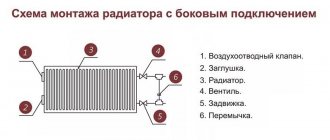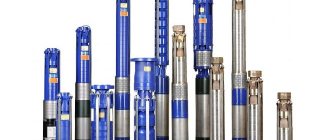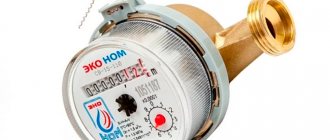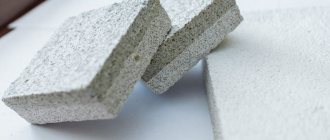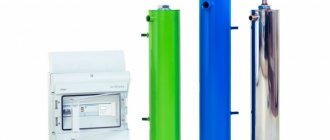When installing a heating system at home, you should not only choose the right pipes and radiators, but also pay attention to the coolant. Let's find out which coolant to choose for aluminum radiators, what conditions for using such liquids exist.
If the room space is more than 20 sq.m., then installation of an additional radiator is necessary.
Types of coolant
Water is the most popular and accessible coolant for water heating circuits. However, due to its use as a coolant for aluminum heating radiators, the metal begins to rust, and scale and deposits appear inside the pipes. Therefore, such systems require periodic flushing and cleaning. Also, during winter shutdowns, there is a real danger of freezing: in such cases, it is necessary to drain the water. If this is not done, freezing of the liquid will certainly lead to rupture of pipes and batteries.
All this indicates that, in addition to correctly calculating the power of the batteries for the room, it is important to use exactly the coolant that is not afraid of freezing and chemical interaction with metal walls. It is important to keep in mind that such special solutions do not have a negative impact on human health when the circuit leaks. We are talking about antifreeze: this coolant is not afraid of low temperatures, which is facilitated by additives and additives dissolved in the liquid, which act as inhibitors of corrosion and mineral deposits.
Types of fluid for heating systems
The main classification of non-freezing liquids is based on their composition. So, according to the presence of the main component in them, they are:
- Propylene glycol antifreeze, created on the basis of a colorless viscous substance.
- Ethylene glycol (the so-called “antifreeze”; ethylene glycol is also used in car antifreezes).
- Glycerin. This option, although still quite rare, over time has a chance of gaining enormous popularity due to its non-toxicity, excellent thermal conductivity and freezing point of -40 degrees.
Antifreezes are also distinguished by viscosity, freezing point and price category. However, most often they pay attention to exactly what composition.
Pros and cons of aluminum radiators
The popularity of aluminum batteries is explained by the following advantages of the products:
- Light weight. The weight of one section does not exceed 2 kg.
- Cheapness. Aluminum is a common metal that is easy to process.
- Easy installation and maintenance. The coating is heat-resistant paint that is easy to clean.
- Excellent decorative characteristics.
- High level of heat transfer. This is facilitated by additional ribs with thin walls. According to this indicator, aluminum radiators are almost 3 times superior to conventional cast iron batteries.
- Compact sizes.
- Fast response to temperature switching due to the low thermal “inertia” of aluminum.
Weaknesses of aluminum radiators:
- Very sensitive to the composition of the coolant (hardness, mineralization). Poor water quality often causes equipment failure. Therefore, deciding which antifreeze is best for a radiator must be taken seriously.
- Tendency to corrosion. Design, installation and repair must be carried out very carefully.
- Working pressure restrictions.
- High probability of formation of air pockets due to the chemical activity of the metal with salts dissolved in water
The choice of coolant for aluminum radiators must be done very carefully.
Main characteristics
The main technical characteristics are:
- The depth of the section is usually from 7 to 12 cm, the width is 8-10 cm, and the height ranges from 37 to 57 cm;
- Working pressure reaches no more than 18 atmospheres;
- 200W is the power of each section;
- The radiator weight is quite large. The weight of each section can be from 3 to 7 kg;
- The section volume is 0.7-1.5 l;
- The average service life is 30-50 years.
- Radiators made of cast iron are superior to other batteries in many ways.
Antifreeze as a coolant
When solving the problem of which coolant to choose for aluminum radiators, it is important to find a specific composition intended specifically for the intended use.
It is important to consider the following disadvantages of antifreeze liquid for aluminum radiators:
- Low level of thermal capacity (inferior to water by almost 115%).
- A circulation pump is required. Without it, the system will not work due to the high viscosity of the antifreeze, which creates additional obstacles to the movement of the coolant along the circuit.
- Noticeable increase in volume when heated.
- Very high fluidity (50% more than water). Because of this, special attention has to be paid to welded (solder) and threaded connections.
- The toxicity of some compounds. We are talking, first of all, about ethylene glycol antifreeze, which must not be used in combination with hot water supply.
Historical excursion
To begin with, I’ll briefly talk about the history of engine building. The first motors were designed and implemented about two hundred years ago. Previously, there were no antifreezes, and they had not yet figured out how to use water as a coolant. As a result, the engine was cooled naturally - using air.
Literally a few years later, a water-cooled motor appeared, which subsequently began to be actively introduced. The first antifreezes were developed only in the 19th century, and were produced in the form of layered, alcohol or glycerin (with the addition of sugar and honey) formulations. Only at the beginning of the 20th century did substances protect internal combustion engines from the negative effects of corrosion go on sale.
Ethanol compounds
The significant cost of this antifreeze for aluminum radiators often becomes a serious obstacle to its use in private autonomous systems. The composition can be obtained from distilled water and 40% ethanol (ethyl alcohol). The quality of such a solution is superior to the factory analogue in certain parameters. The matter mainly concerns its low viscosity (although compared to water it remains quite high). There is also a decrease in fluid fluidity, which makes it possible to be less demanding on the connecting areas.
The use of homemade ethanol antifreeze for heating radiators has a beneficial effect on the safety of the rubber sealing gaskets that are present in any circuit. It is recommended to dilute alcohol with hard water: in combination with ethanol, it will become a serious obstacle to the formation of scale on the inner walls. In this case, you cannot do without solid sediment, but you can easily get rid of it by flushing the system. In cases where the percentage of ethyl alcohol in water does not exceed 30%, it will not evaporate.
Due to the fact that the coolant for aluminum radiators is similar in its characteristics to water, its boiling point is approximately the same as that of water. This suggests that when the temperature reaches + 85-90ᶷ, no steam release will be observed. Thanks to ethanol, the thermal expansion of water is reduced by an order of magnitude, which allows the system to more comfortably tolerate lower temperatures in the room.
What proportions to use
It is important to understand that to lower the freezing point it is necessary to increase the percentage of ethanol in the solution:
- When the indicator drops to -10.6 degrees, ethyl alcohol must be present in an amount of at least 20.3%.
- When the temperature drops to -23.6 ᶷ degrees, the share of ethanol increases to 33.8%.
- At a temperature of -28.7 degrees, alcohol is added in a volume of 39% alcohol.
- At a temperature of -34 degrees - 46.3%.
It should be taken into account that one liter of 96% ethylene contains 960 ml of anhydrous alcohol. Therefore, to obtain a 33% solution, you will need 96/33 = 2.9, that is, 2.9 liters of distilled water. That is, to make a 33% solution you need one liter of ethyl alcohol and 2.9 liters of distilled water. The antifreeze obtained in this way for heating can be safely poured into a circuit with aluminum radiators, because it will retain its fluidity even at -22 degrees below zero.
There are certain restrictions on the use of homemade and factory-made non-freezing coolants for bimetallic radiators:
- It is strictly forbidden to use antifreeze in heating circuits with electrolysis boilers.
- Antifreeze cannot be used in open heating systems. We are talking primarily about toxic ethylene glycol compounds.
- It is not advisable to allow the liquid temperature to drop below -20 ᶷC. This significantly deteriorates the quality of the additives used, which provokes the formation of scale on the internal walls.
- In systems with antifreeze, it is prohibited to use flax tow placed on the paint. Under the influence of ethyl alcohol, it quickly disintegrates, which leads to depressurization of the connection. It is best to use Unipak plumbing paste in such cases.
- Antifreeze liquids have a destructive effect on galvanized elements.
How to choose a suitable cooler for an aluminum engine?
It is important to choose the right product for your vehicle. Filling with harmful coolant can lead to engine malfunction and even deformation. There are a number of tips that will allow you to buy a product that meets all the characteristics:
- Many refrigerants have different shades. Often, the color scheme corresponds to the class of liquid. G 11 is characterized by green and blue colors; for G 12, 12+ and 12++, manufacturers choose red, orange, and sometimes green tints. G 13 - predominantly red, sometimes purple, lilac.
- It is important to study the composition of the product. For aluminum motors, it is worth choosing a minimally toxic product.
- It is necessary to take into account what is added to antifreeze as additives.
It is imperative to make sure that the substances sold in the store are original. To do this, you need to carefully inspect the canister and ask the seller for a quality certificate.
Results
Discussions on the topic of whether it is possible to pour antifreeze into aluminum radiators brought very specific answers. Responsibility for choosing a coolant lies entirely with the owners of the household. When considering various liquid options, one should keep in mind one more feature of systems filled with antifreeze coolant. If the operating temperature regularly exceeds the limit of +70ᶷ degrees, it is better to refrain from using antifreeze solutions, because because they have a very high expansion due to the alcohol content. This is fraught with pipeline ruptures and damage to heating devices.
The most popular brands of refrigerants
Today there are several brands that deserve attention from drivers. The following companies produce good auto chemicals for aluminum engines:
- "Tosol-Sintez" A Russian company that produces antifreezes of the popular Felix line. There are four types of compounds that have different properties.
- Liqui Moly. German manufacturer. The compositions from this company are very high quality and today are among the leaders in sales.
- Motul. A French company that pays special attention to the biological safety of materials and the complete safety of users.
- "Obninskorgsintez" A Russian brand engaged in the development and production of Sintec antifreeze.
Various antifreezes are popular in Russia. In addition to these, we can also highlight Long Life and Nord.


